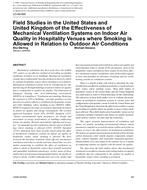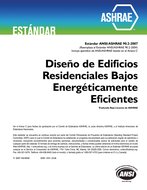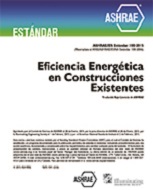Description
Mechanical ventilation has been used since the middle 19th century as an effective method of providing acceptable conditions of indoor air in buildings. Mechanical ventilation systems have traditionally been the method of choice by which to ventilate hospitality venues where smoking occurs indoors. Mechanical ventilation systems work by introducing air into and moving air through buildings to achieve indoor air quality that is comparable to outdoor air quality. The Federation of European Heating and Air-Conditioning Associations (REHVA) in Guideline 4 “Ventilation and smoking: Reducing the exposure to ETS in buildings” provides guidance on best practices to achieve effective ventilation for hospitality venues and other buildings where smoking occurs (REHVA 2004). REHVA recognizes this topic as extremely important in respect to indoor air quality and energy consumption. The recently approved European Union (EN) EN/DIN Standard 15251 “Indoor environmental input parameters for design and assessment of energy performance of buildings addressing indoor air quality, thermal environment, lighting and acoustics” recommends specific ventilation rates for spaces in buildings where smoking is allowed (CEN- EN/DIN Standard 15251). Questions have been recently raised about the effect of mechanical ventilation systems on indoor air quality in hospitality venues where smoking is allowed. We have reviewed the literature available about effective mechanical ventilation and tobacco smoke and have found that very few studies purporting to establish the effect of ventilation on tobacco smoke in hospitality venues have actually measured and quantified ventilation parameters. In fact, many of these studies have not measured and quantified indoor air quality or tobacco smoke. Further although there are a few studies that have measured and reported ventilation, indoor air quality and environmental tobacco smoke (ETS) parameters, most of the hospitality venues included in these studies do not have effective ventilation systems. In addition, some of the studies appear to have misclassified air filtration (cleaning) and air conditioning systems as ventilation systems.
There is a dearth of data with which to determine the relationship between effective ventilation and tobacco smoke in hospitality venues where smoking occurs. These field studies of hospitality venues in the United States and the United Kingdom was undertaken in order to obtain field data on this relationship. The objectives of these field studies were to evaluate the performance of mechanical ventilation systems in various types and configurations of hospitality venues in both the United States and the United Kingdom to determine the effectiveness of these systems in providing acceptable indoor air quality in spaces where smoking is allowed. These field studies of six hospitality venues on two continents included ventilation and indoor air quality measurements of three casinos, two pubs and one restaurant.
This paper presents measurements of ventilation and indoor air quality including environmental tobacco smoke parameters sampled in several locations within each of the six venues to assess the effectiveness of mechanical ventilation. The indoor air quality measurements included carbon dioxide, carbon monoxide, total volatile organic compounds, temperature, relative humidity and respirable suspended particles. Measurements were also taken in the outdoor air as a means of comparing outdoor air quality with the indoor air quality.
The data from the field studies shows that mechanical ventilation is an effective means of providing indoor air quality conditions that are comparable to the outdoor air quality in hospitality venues where smoking is permitted.
Units: Dual
Citation: ASHRAE Transactions, vol. 115, pt. 2, Louisville 2009
Product Details
- Published:
- 2009
- Number of Pages:
- 8
- File Size:
- 1 file , 190 KB
- Product Code(s):
- D-LO-09-068




